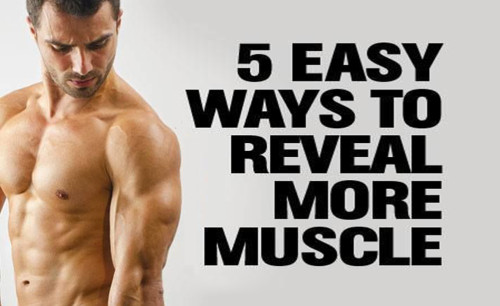You love lifting. You love the plain challenge and the simple rewards—beating your previous best and feeling a great pump afterward. And maybe you hate cardio. Devoting gym time to cardiovascular exercise feels as if you’re burning away hard-earned muscle. But you’re not—you’re revealing it.
If gaining mass is all you focus on, soon no one will be able to distinguish your traps from your deltoids. For a lean and chiseled physique, you need cardio work (relax—no distance running involved). Just follow our 5 easy steps to reveal more muscle. You don’t need much cardio (15 to 20 minutes twice a week max), and most of what you do need should be at a high intensity, as befits a man with a lifter’s mindset. But after a few weeks, you’ll start to notice less fat and greater muscle definition. Consider it the fast track to the body you’ve always wanted—without feeling like a rat on a wheel.
1. Change the Cycle
You don’t lift the same way all year, so why should the frequency, intensity, and duration of your cardiovascular workouts stay the same? They shouldn’t.
When you’re trying to add muscle, keep your aerobic work to a minimum—say, once or twice a week for about 15 to 20 minutes. This will limit your energy expenditure and allow your body to concentrate on building muscle.
When you’re trying to get lean, increase your cardio training to two to four times a week, to help strip away excess body fat.
At all times, alternate your cardio methods so your workout’s not so boring—treadmill running 1 day, rowing or elliptical training the next, cycling the day after that.
2. Separate Cardio from Lifting
Serious lifters worry that cardiovascular training will impede their ability to recover from intense strength training. That all depends on when and how you do your cardio.
Keep your cardio days and strength days as removed from each other as possible. That way your cardio won’t hinder gains in strength and size. For instance, doing a tough cycling workout after you hammer your legs with squats and lunges isn’t a good idea if your goal is to build bigger legs. Save your cardio for the next day, or even 2 days later, to rest your legs.
If you must do cardio and weights on the same day, choose a form of aerobic work that emphasizes body parts your weight lifting didn’t focus on that day. So, if your cardio choice is rowing, which works your upper body as much as it does your legs, row on a day when your weight session doesn’t concentrate on your upper body.
Whichever route you choose, just be sure to hit the weights first. You don’t want to wipe yourself out before your weight routine—you won’t get the most out of your session, and lifting when you’re tired can be dangerous.
3. Don’t Make an Impact
Your body has enough to contend with in repairing the damage that lifting inflicts on it. The last thing you need to do is break it down further with high-impact cardio training.
Concentrate on cardio workouts that minimize microtrauma—the small tears to muscle fibers that are part of the process of building new muscle. Running on hard surfaces like asphalt or concrete can be traumatic to muscles and joints. Jumping rope can cause similar problems.
Your best bets for low-impact exercise are swimming, cycling, and using an elliptical machine.
4. Ignore the “Fat-Burning Zone”
It’s a myth that you have to work out continuously for 20 minutes before you begin burning fat. The thinking once was that you needed to exercise in a range between 60 percent and 80 percent of your maximum heart rate. Any lower was too easy, and any higher made it too difficult to efficiently use fat for fuel.
Ignore that theory. Your body uses more energy overall when training at high intensities—just look at the physique of a sprinter. Going all out also makes better use of your time. You can finish your cardio in an intense 10- to 15-minute workout.
Stick to interval workouts that feature short bursts of high-intensity movement followed by active recovery periods. This approach is best for your heart and for fat loss.
5. Choose the Path of Most Resistance
Changing the gears on a bike and altering the gradient on a treadmill, for instance, are great ways to increase intensity. Just be careful to find a level of resistance that won’t reduce the amount of work you’re able to do when you return to the weight room.



Post your comment